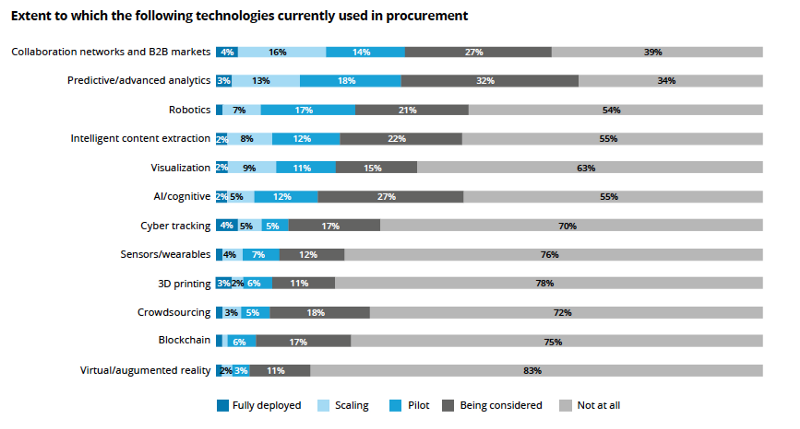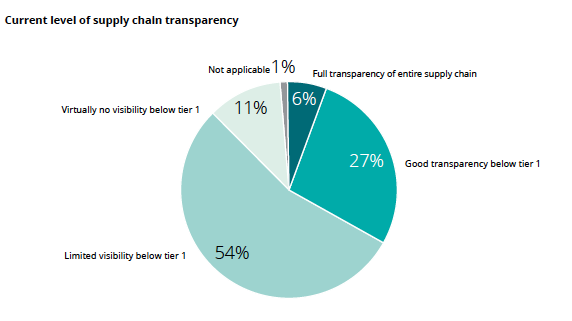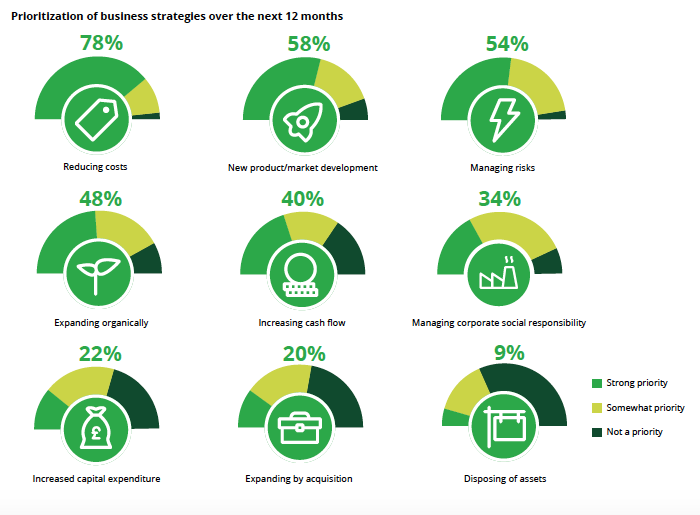There’s a lot of noise out there.
Creating a message and having your company stand apart — from the rest of the pack — is extremely difficult.
Distinguishing a brand, strategy, product, or even a website is nearly impossible in this world, oversaturated with sameness. Campaigns and initiatives rise to the surface on a daily basis, taking over the headlines for a week, just to sink to the bottom of the ocean again.
While this all may sound rather cynical, in the case of most businesses, it holds rather true. In the case of branding supply chain management initiatives, more specifically procurement initiatives, this ‘five minutes of fame effect’ becomes all the more apparent.
Whether you’re brand has been blasted — sourcing cobalt from an African supplier with child labor present — or praised — implementing a blockchain in China to secure better financial stability in the sourcing of medical devices — it’s all one in the same.
The noise of this week’s headlines won’t hang around long, and that’s when actions begin to speak louder than words.
I’ve read the headlines and listened to the noise long enough. Now it’s time to pop in my earplugs and see the world through my own eyes.
I hope you can gain something from joining in on my point-of-view, supported by the 2018 Global CPO Survey by Deloitte.
This is: The Facts and Myths of Procurement (Part 1)
The State of Technology in Procurement
Myth: Artificially Intelligent technology and RPA (robotic process automation) are the next big technologies to impact the procurement world.
Sure…. AI and artificially intelligent technologies will bring procurement cognitive capabilities, but that is a reality that is much further off than one may want to believe.
Machine-to-machine capabilities have been realized, but tech vendors haven’t yet discovered AI’s full potential. Furthermore, there are only a handful of procurement teams that have deployed artificially intelligent solutions into their digital procurement strategy.
See chart below from the 2018 Global CPO Survey by Deloitte. This highlights the small number of organizations who have successfully implemented AI capabilities.
 Source: Deloitte
Source: Deloitte
As for RPA, there is a more realistic chance of this technology breaking through into the mainstream in the next few years. But, still, one should be weary of the hype, considering the complexity of response databases that would have to be built. Procurement is a field filled with risk, nuances and circumstantiality. So, to say that a RPA would be able to enhance the procurement function, is to say “our company is going to throw a hell-of-a-lotta time, money and effort at implementing RPA solutions”.
For those who don’t know, “RPA is an application of technology aimed at automating business processes. Using RPA tools, a company can configure software, or a “robot,” to capture and interpret applications for processing a transaction, manipulating data, triggering responses and communicating with other digital systems, according to the Institute for Robotic Process Automation and Artificial Intelligence” (Boulton 2017).
It differs from ML and/or AI in the sense that “RPA can include ML or AI, but it is governed by set business logic and structured inputs, and its rules don’t deviate, whereas ML and AI technologies can be trained to make judgments about unstructured inputs” (Boulton 2017).
RPA has been estimated to reach a $1B market value by 2020 (Gartner).
Fact: Data compilation, scalability and growing more complex analytics should be the technological concerns of procurement teams, in the here and now.
Regardless of the noise, the mainstream market isn’t — yet — mature enough for the likes of large scale AI and RPA adoption.
Organizations, today, should be concerned about the quality of their procurement data, and adopting digital procurement solutions that allow that data to become scalable. There is no shame if you’re reading this, thinking, “crap, we’re still storing supplier-data in excel”.
Plenty of your competitors are as well.
Position yourself with ground knowledge of coming technologies, and a means to benefit from your current data compilation. Utilizing advanced (maybe even predictive) analytics will be the groundwork to the acceptance and adoption of coming technology such as AI and RPA.
The State of Supply Chain Visibility & Transparency
Myth: Procurement executives have end-to-end, product lifecycle, transparency of the materials they purchase, and the suppliers within their supply chains.
Sorry to say, but the statement above is a myth.
Procurement professionals and supply chain managers, at large, are working towards the betterment of global supply chain transparency — supported by digital technology. But, regardless of how well these organizations know their suppliers, it doesn’t go very far down the chain…
Fact: Very few procurement professionals have any visibility whatsoever beyond their first-tier suppliers.
Consumer concerns have incited responsible procurement movements, and stakeholder adamancy for transparency has continued to push the issue within the global supply chain.
Companies, worldwide, have come out — in public — renouncing social and environmental wrongdoings by their suppliers; promising consumers visibility!
Some have even went as far as publishing ‘sourcing maps’ where stakeholders can see the location, address and gender breakdown of supplier companies around the globe.
While this is a huge step in the right direction, there is still a long way to go in order to truly build end-to-end supply chain visibility.
See image below from the 2018 CPO Survey, by Deloitte. This pie graph highlights that 65% of respondents, in total, have little to no visibility beyond their tier 1 suppliers.

“This (lack of visibility) has major implications for organizations across all industries, particularly for meeting regulatory and corporate social responsibility requirements and for the identifi cation and mitigation of supply chain risks” (Deloitte 2018).
Which leads to the next area for discussion…
The State of CSR & Sustainability in Procurement
Myth: CSR and Sustainability are main focuses of procurement. And for that reason procurement acknowledges these areas as key performance indicators; not solely based on cost.
Riggggghhhtttt.
Don’t take this the wrong way, but procurement is still a cost-fixated function. Performance is measured by cost-efficiency in many procurement organizations, and that is a notion sanctioned and enforced by executives.
Sustainability and CSR may very well be the focus of your procurement organization, and that’s great!
But… chances are, cost is king. And, unfortunately, CSR/Sustainability and cost-efficiency are elements that often have conflicting motives within procurement organizations.
One of those, have your cake and eat it too scenarios…
Fact: Procurement prioritizes cost above all. CSR and Sustainability are glorified in name, and typically utilized for brand self-actualization.
While procurement remains a function driven by cost-reduction, market shifts have shown that procuring with responsible business practices in mind could very well be the cost-efficient choice.
Consumers look to buy from socially contentious brands, and this has created an upstream change in the mindset of suppliers. “An increasing number of suppliers have embraced sustainability as an operational philosophy, and that has changed pricing and market strategies” (Weissman 2017).
For suppliers, sustainability has become criterion for remaining competitive within the market place, and not solely the cost of their products. In fact, the green alternative may very well be the low cost alternative in today’s day and age.
Read more on how Supplier Relationship Management Is The Heart Of Sustainable Procurement.
The 2018 CPO Survey by Deloitte shows contradictory feelings about CSR as a priority in procurement orgs. Though it seems a bit bizarre (keeping in mind internal stakeholder and external pressures for social responsible procurement activities) there is still a minority focus on CSR as a priority.
See figure below. This highlights that cost reduction still holds a commanding lead for the top spot as global procurement priorities. Sustainability and CSR have
 Source: Deloitte
Source: Deloitte
These are the facts and myths of procurement as I see them…
Now, you be the judge!
Until next week.












